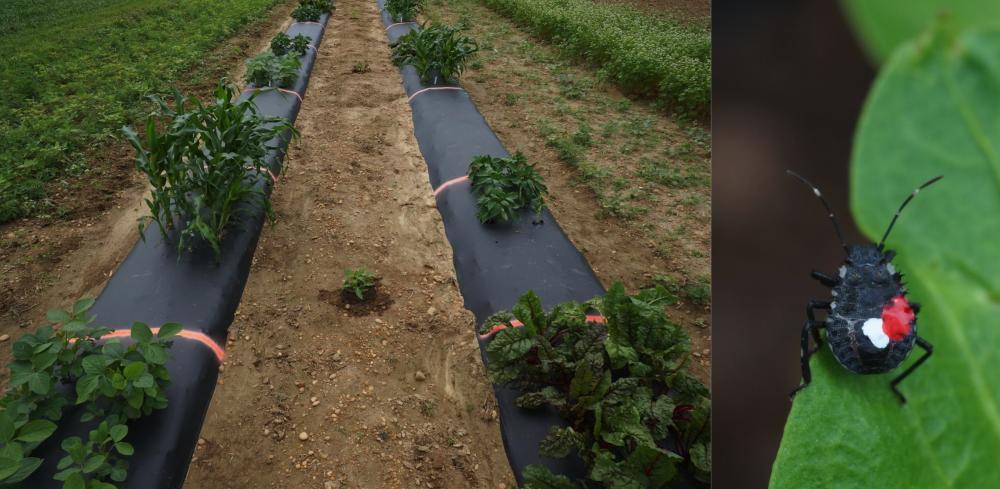BMSB Dispersal
BMSB nymphs can move among host plants within a planting or among different host plants on a farm. This sub-objective will elucidate the spatial scale of their movement and host preferences of nymphs.

A summer student is watching 3rd and 5th instar BMSB to record their walking capacity across different times of day on this grass field in a USDA-ARS research farm in West Virginia (photo credit: Doo-Hyung Lee).

This is one of the 3rd instars we were watching and recording. This insect is small and well camouflaged; which means we often lose this insect while tracking (photo credit: Doo-Hyung Lee).

A large-scale mark-release-recapure study was set up in an organic farm (Redbud Farm) in WV to measure nymphal dispersal capacity using the newly-identified BMSB olfactory attractant (photo credit: Doo-Hyung Lee).

A landscape view of the experimental plot (photo credit: Doo-Hyung Lee).

Marked bugs with various colors (although only white shown here) were released in the experiment to code bugs between experimental plots and dates (photo credit: Doo-Hyung Lee).

A marked bug (with the blue dot) arrived at the trap in the study (photo credit: Doo-Hyung Lee).
Plots of organic vegetables (soybean, Swiss chard, bell peppers, and sweet corn) to investigate the dispersal capability and host preference of BMSB nymphs (Bridgeton, NJ).

BMSB nymphs were marked with different colors and then relesed from center plants bi-weekly throughout the summer. After 1, 3, and 5 days afer each release, plants were observed for marked nymphs. BMSB nymphs were able to disperse from the center plants and appear to make a host plant choice for the best resources (Bridgeton, NJ).
Project Funding

This project was funded in 2012 by the Organic Research and Extension Initiative grant, part of the USDA National Institute of Food and Agriculture. Grant number 2012-51300-20097.
